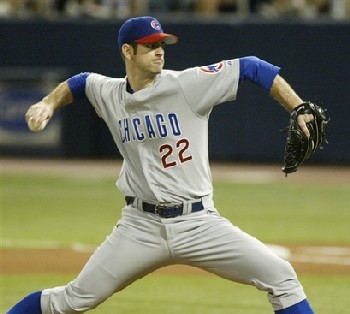Patterns
5/23/2007 I have spent much of my
professional career troubleshooting very large, complex computer
systems.
Why trying to debug
such a system, the thing that I have learned to look for are
patterns; consistent ways that that system fails (usually as a
result of specific actions). Those patterns then suggest cause and
effect relationships, and I then drill into those possible causes.
I am taking the same approach with
this project.
What I am doing is looking for groups of pitchers who have
specific kinds of problems (e.g. labrum tears). I then look at
their mechanics and look for patterns; consistencies in what they
do — and that pitchers who do not have those problems do not do
— that might suggest the root cause of the problems they are
experiencing.
I believe that I have detected a number of patterns
that may be related to an increase risk of injuries. Don't Move The Elbows Above
And Behind The Shoulders
Some pitching gurus believe that one thing a pitcher must do
to generate significant power is to make an upside-down W with
both arms; to have the hands at the level of the shoulders and the
elbows above the level of the shoulders.
Based on what I have seen
in the first 40 (or so) analyses I have done, I think this is
potentially very bad
advice.
I am not exactly certain what the exact mechanism of injury is, but
I believe it might be related to the impingement of the muscles of
the rotator cuff on the bony structure of the shoulder.
Regardless, it seems that virtually all of the pitchers whose
motions I have analyzed who have had shoulder problems — and none
of the pitchers whose motions I have analyzed who have not had
shoulder problems — take their elbows both above and behind their shoulders at
some point in their delivery.
By way of confirmation of this, at the end of 2005 I predicted that
Mark Prior would experience shoulder problems because he does
this.

Mark Prior Toward the end of February 2006, reports started to emerge
that he was experiencing problems with his shoulders. I believe
that his problems are related to this problem with this pitching
motion.
This isn't just my idea. I have come across several articles that
discuss this problems with doing this.
If I am correct about this
relationship, then I believe that a large number of pitchers are
at an increased risk of experiencing serious problems with their
Rotator Cuffs (especially subscapularis tears).
Professional pitchers that I believe are at an above-average risk of
experiencing this problem, because they take their elbows both
above and behind their shoulders, include...
- Jeremy Bonderman
- Matt Cain
- Aaron Heilman
- Brandon McCarthy
- Anthony Reyes
- Jae Seo
- Joel Zumaya
I believe the safer
way to turn the pitching arm over, and to perform
Scapular Loading, is to keep the elbows below the
shoulders. This is what Greg Maddux does (see photo below), and I
believe that it has contributed to his longevity.

Greg Maddux
Taking The Elbows Behind The Acromial Plane
Isn't Necessarily Dangerous
One of the things that Dr. Mike Marshall is adamant about is
that at no point in the pitching motion should a pitcher's elbows
go behind their Acromial Plane (basically their back). While this
advice is based on good science — that the shoulder joint becomes
less and less stable as the elbows move behind the Acromial Plane
— I think Dr. Marshall might be (possibly intentionally)
overstating the problem.
While it is best to keep the elbows in front of the Acromial Plane
(in the Green Zone), it appears that the elbows can move some
distance, and by that I mean perhaps 15 degrees, behind the
Acromial Plane (into the Yellow Zone) without placing undue stress
on the muscles of the front of the Rotator Cuff. I say this
because in my analyses I have seen that many major leaguers — who
did not have shoulder problems — take their elbows slightly
behind their Acromial Plane and into the Yellow Zone.
However, I do believe that if the elbows go too far, and by that I
mean perhaps 30 or 45 degrees, behind the Acromial Plane and into
the Red Zone then the risk of injury increases significantly. Don't Start Rotating The Shoulders Too Soon
I have come to believe that good timing is one thing that
distinguishes pitchers who experience injuries and those who do
not. One timing problem that I believe leads to pitchers injuring
their Labrums is starting to powerfully rotate their shoulders
before their forearms are up and in the high cocked position
(which is a flaw that some people call "rushing"). I
believe that this puts extra pressure on the shoulder joint and in
some cases can overload it, injuring the Labrum. I believe this
flaw explains the problems that a number of pitchers have or had
with their Labrums...
- Josh Beckett
- Kevin Brown
- Chris Carpenter
- Cole Hamels
- Brian Lawrence
- Robb Nen
- Mario Soto
- Billy Wagner
- Paul Wilson
- Kerry Wood
Update 2/2008: I
have continued to work on my pitcher injury analysis project and
have refined my terminology. I have identified three patterns
that I think increase the risk a pitcher will experience
injuries...
|